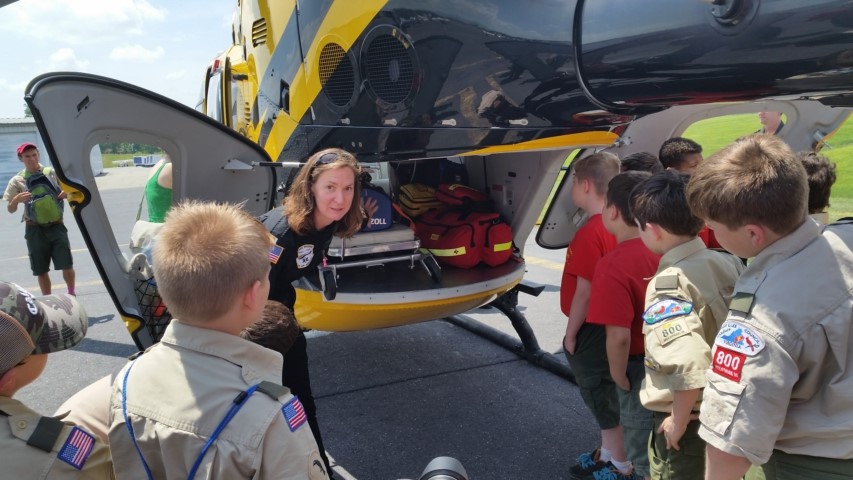 Daily News-Record (Harrisonburg, VA) - Monday, May 18, 2015
Daily News-Record (Harrisonburg, VA) - Monday, May 18, 2015
Author: AMELIA BRUST
WEYERS CAVE - The sight of a medevac helicopter is usually a bad sign, but on Saturday visitors were encouraged to get a closer look. Crew members of the AirCare 5 medical helicopter at Shenandoah Valley Regional Airport opened their hangar to the public in honor of the service's 10th anniversary in the Valley.
Visitors were shown around the Weyers Cave facility and inside the helicopter to learn about the its role in the region. For Boy Scout Troop 800 of Midlothian, it was a chance to get outside and on the road while "exposing them to things they wouldn't normally do," said assistant Scoutmaster Howard Fishburne.
"I do love this stuff," said troop member Caden Caruso, 11, whose father pilots a Diamond Aircraft personal plane. As he ducked underneath the back of the helicopter, Caruso said he liked learning about the different features of aircraft, big and small.
The dual-engine AirCare 5 helicopter burns about 1.2 gallons of gasoline per minute and usually flies at 136 knots, or about 156 mph. Flight nurse Matt Painter told visitors that crews typically fly at altitudes of 2,000 to 3,000 feet above ground level, making the journey from the airport to the trauma center at the University of Virginia Medical Center in Charlottesville only about 15 minutes long.
Fishersville resident Ray Ellington and his wife, Allison, brought their 3-year-old son, Landon, to the open house after seeing it advertised online. Ray Ellington, 36, said he sees the helicopter frequently land at Augusta Health when he is dropping his son off for day care at the facility.
AirCare 5, which is owned by Phoenix-based PHI Air Medical, averages 1? transports each day and has made 4,616 flights in the last 10 years, according to Jim Miller, flight nurse and manager for AirCare 5. Because it is a community-based helicopter, expenses are taken from patients' health insurance, Medicare or Medicaid.
AirCare 5 is not affiliated with any hospital but primarily works with Sentara RMH Medical Center and Augusta Health. Miller estimated about 55 percent of flights originate from a hospital while the other 45 percent are to take a patient from the scene of an incident to a hospital or trauma center.
Before its installation in Weyers Cave in April 2005, trauma patients were dependent upon U.Va.'s Pegasus service and Life-Guard at Carilion Roanoke Memorial Hospital, Miller said. Painter explained that all pilots, flight nurses and paramedics - who staff the facility 24/7 - must be able to treat patients of any age, from infants to seniors.
"You never know what your day's going to be like," he said.





